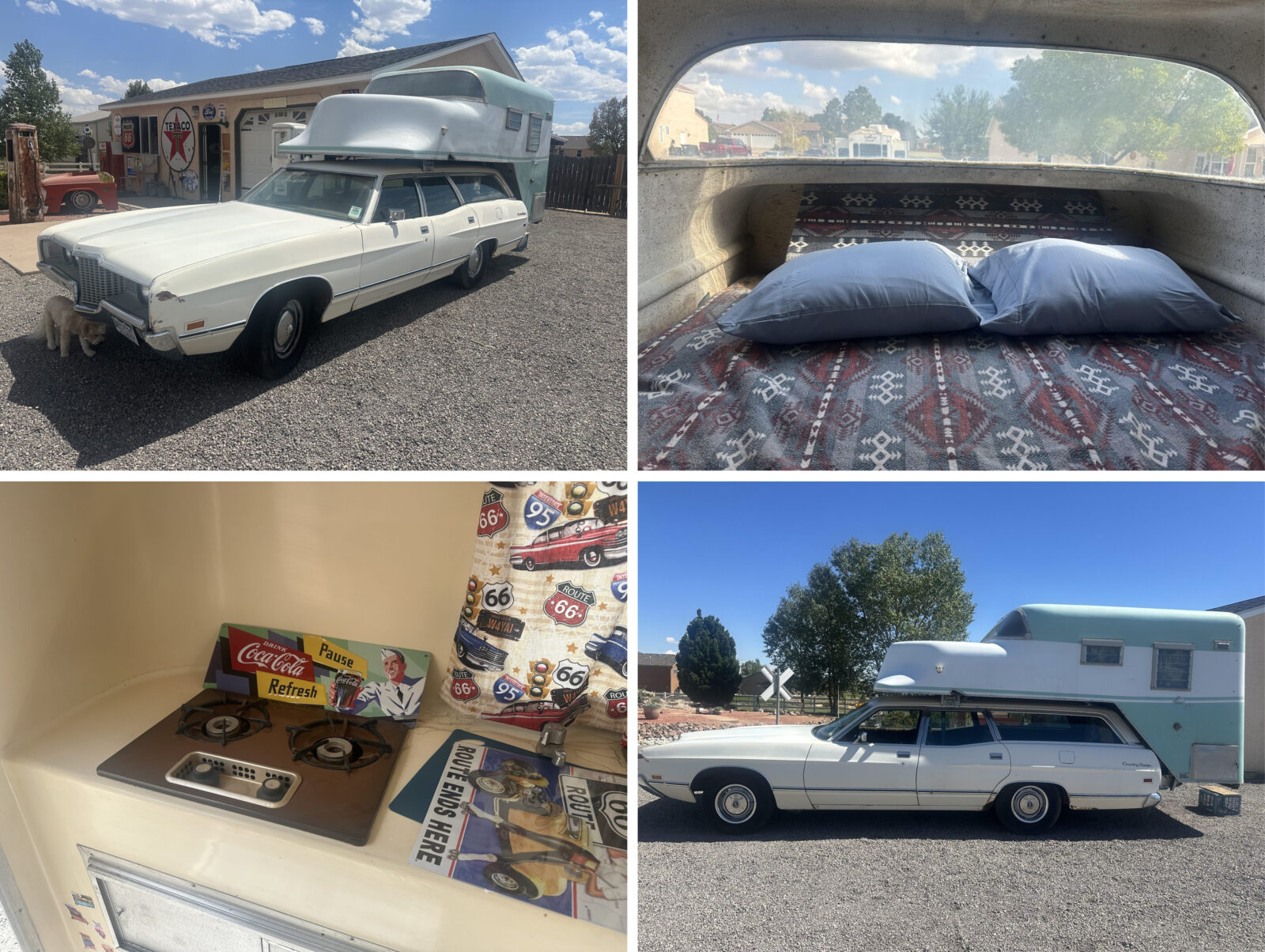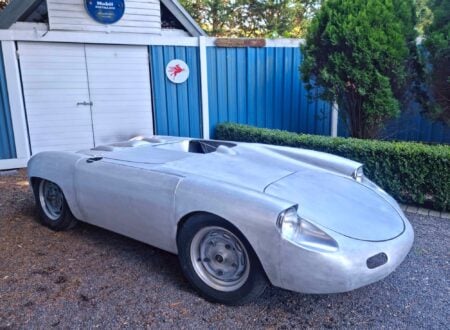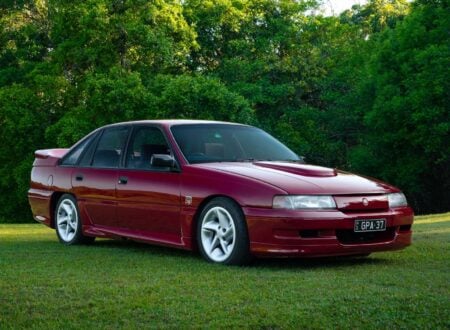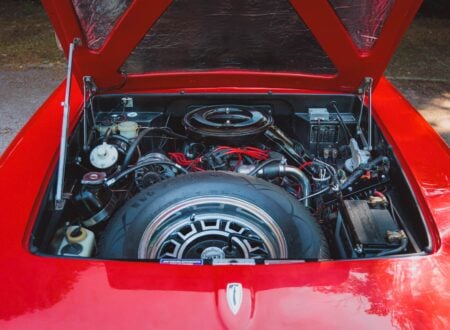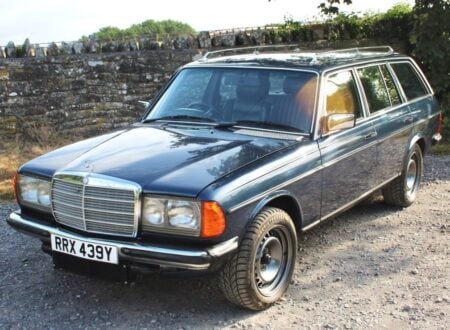This is a 1971 Ford Country Sedan, but you might have noticed it has an unusual addition – a ToteMotel camper on the back (and roof) that turn it into a mini-RV of sorts
Relatively few of these ToteMotel campers have survived and they were only sold for a handful of years in the 1960s, an evolutionary dead end that would be replaced by rooftop tents and compact travel trailers like the Airstream Bambi.
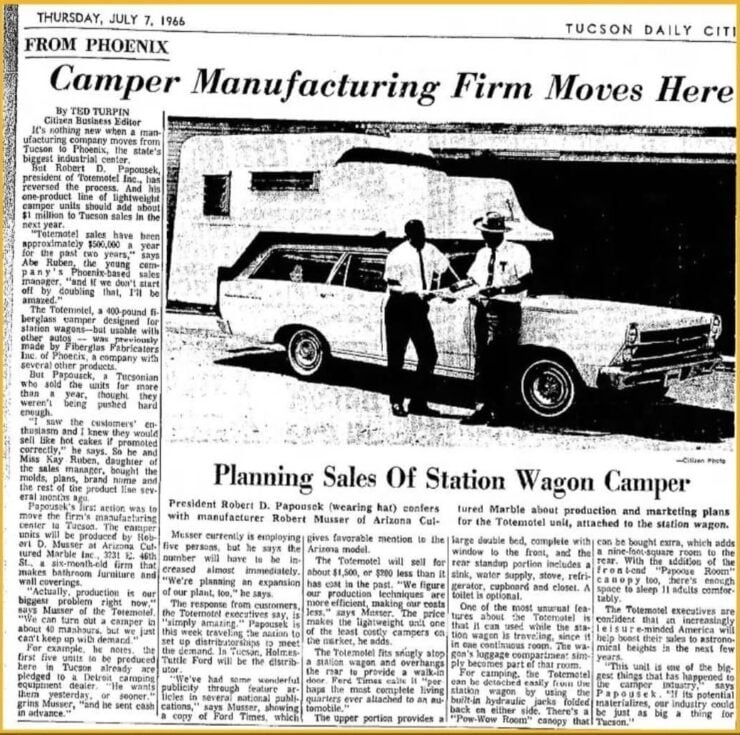

History Speedrun: The ToteMotel
The ToteMotel, sometimes referred to as the Litehouse ToteMotel, was a brief but fascinating experiment in mid-1960s American camping culture. It was invented as a way to turn the family station wagon into a dual-purpose vehicle – a commuter during the week, and a camper on the weekend.
Instead of towing a trailer, the ToteMotel was designed as a fiberglass shell that could be mounted directly to the rear and roof of a full-size wagon, extending the roofline upward into a small living space.
The development of the ToteMotel coincided with the peak popularity of American station wagons. Automakers like Ford, Chevrolet, and Chrysler were selling hundreds of thousands each year, and camping popularity was on the rise.
Lightweight fiberglass technology, still relatively novel at the time, made it possible to build a removable camper that wouldn’t overwhelm a car’s suspension. The ToteMotel was marketed in 1964 and 1965, though some units appear in 1966 sales literature under the “Litehouse” name.
Period brochure claims suggested it weighed under 400 lbs, though enthusiasts today generally doubt that figure was accurate.
Styling was dictated by necessity – the fiberglass shell sat high on the wagon’s rear, with a raised roofline and flat sides. Entry was through the station wagon’s tailgate, integrating the car’s interior with the camper as much as possible. Windows along the sides and rear provided light, and some examples reportedly included a bunk large enough for a king-size mattress, as well as basic cabinetry or storage.
The design relied on a series of mounting brackets tied to the roof rack, drip rails, and tailgate area, with support poles for off-vehicle storage. Specifications varied slightly depending on the car it was mounted to, but the camper itself was uniform.
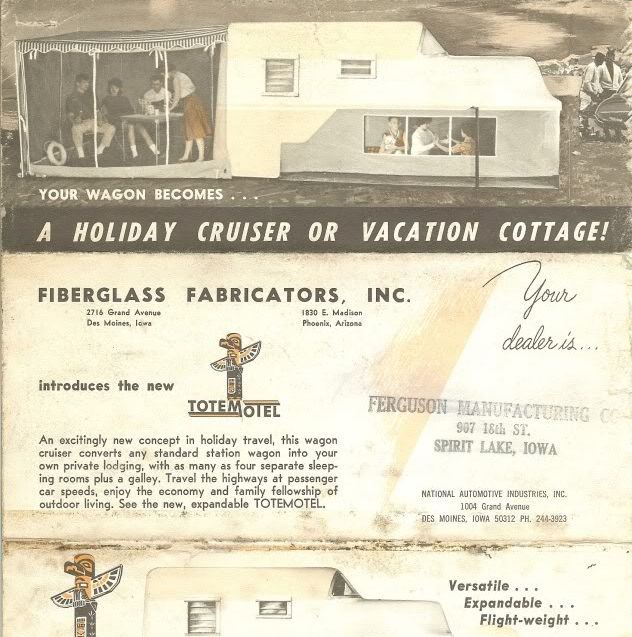

The ToteMotel was intended for mid-1960s full-size wagons like the Studebaker Daytona Wagonaire, Ford Country Sedan, and similar models. One well-documented survivor is the Studebaker Museum’s 1965 Daytona Wagonaire fitted with a ToteMotel, powered by a 283 cubic inch Chevrolet V8.
Period ads emphasized the fact that the camper was removable – restoring the car to family duty once the trip was over and removing the need for a separate, costly RV or travel trailer. The camper could also be set up independently of a car, as a small portable cabin.
Competitors included compact travel trailers like the Apache and early fiberglass units from companies like Boler and Scamp – other aftermarket firms offered roof-mounted tents and car-top campers, though most were smaller and less ambitious than the ToteMotel.
Production ended after only a short run, likely due to limited demand and safety concerns. Surviving examples are rare, surfacing occasionally in museum collections, classified listings, or forums.
The 1971 Ford Country Sedan With A ToteMotel Shown Here
The vehicle you see here is a 1971 Ford Country Sedan powered by a 400 cubic inch (6.5 liter) V8 linked to a 3-speed automatic transmission. The car has Medium Ginger upholstery, an AM radio, 15″ wheels, power steering, and front disc brakes.
The most interesting part of the car, arguably, is the ToteMotel mounted to the rear and roof. It’s a removable camper that converts the Country Sedan into a capable little weekender, equipped with jalousie windows, a sleeping berth, and a kitchenette with an ice box, a sink, and a two-burner cooktop.
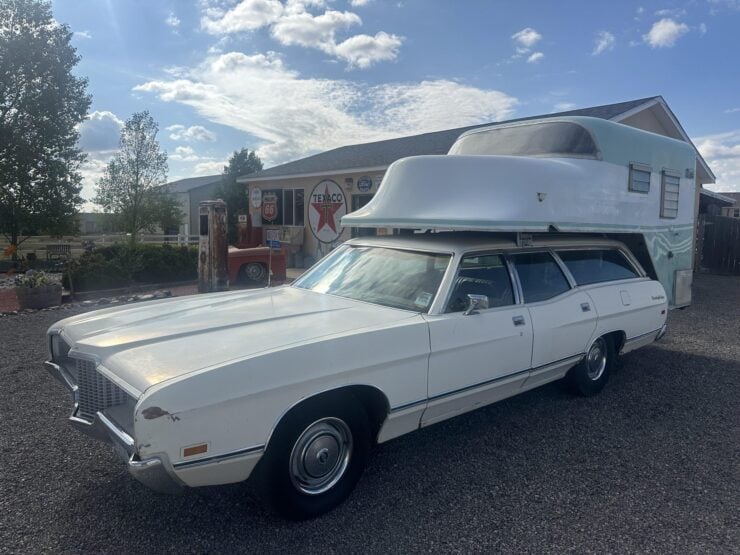

The interior of the car is accessible through the camper section, increasing its practicality and meaning you can safely drive away if you’re camping out in the woods and you happen to attract the attention of a bear.
The car and its unusual camper are now being offered for sale out of Pueblo, Colorado with a clean Colorado title in the seller’s name. If you’d like to read more about it or place a bid you can visit the listing here.
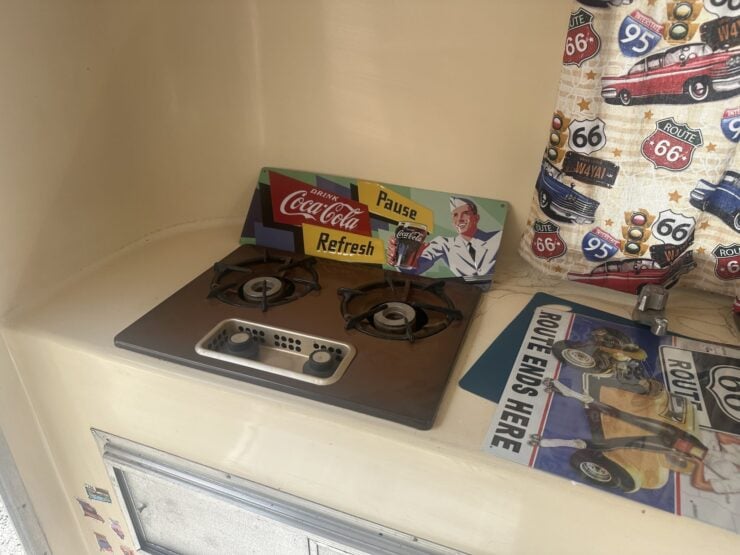
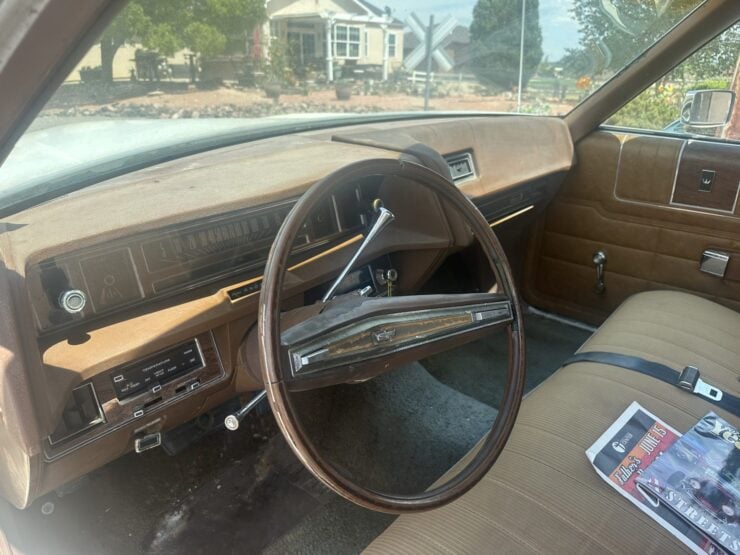
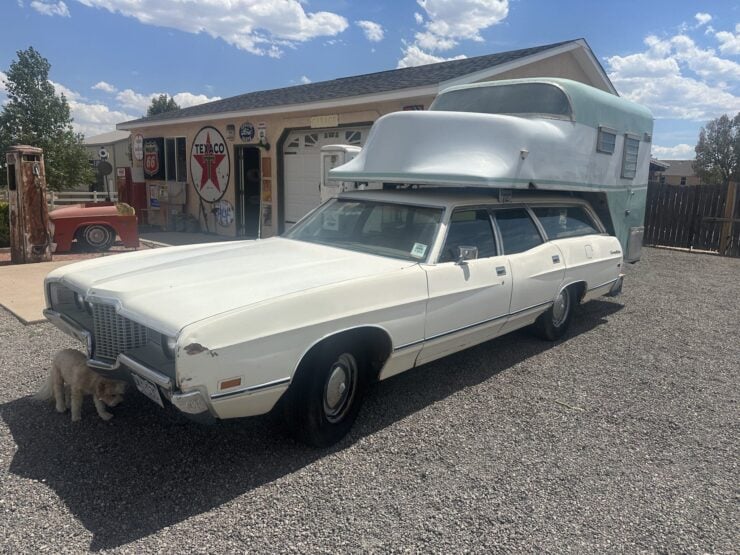
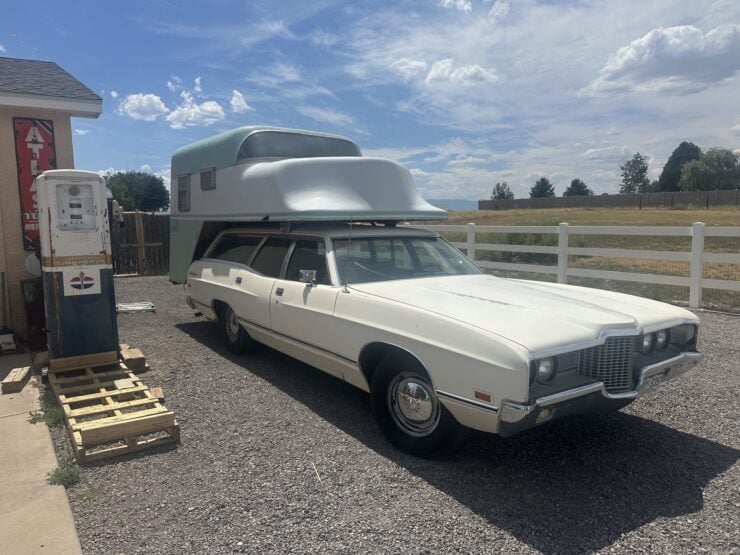

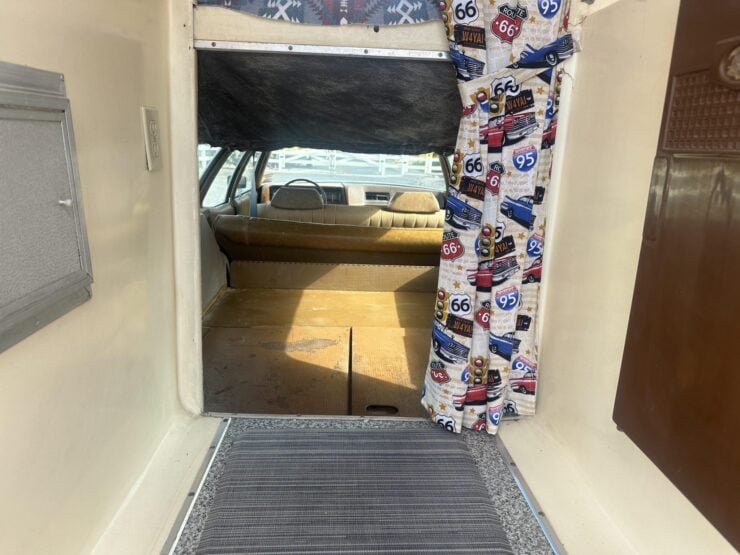
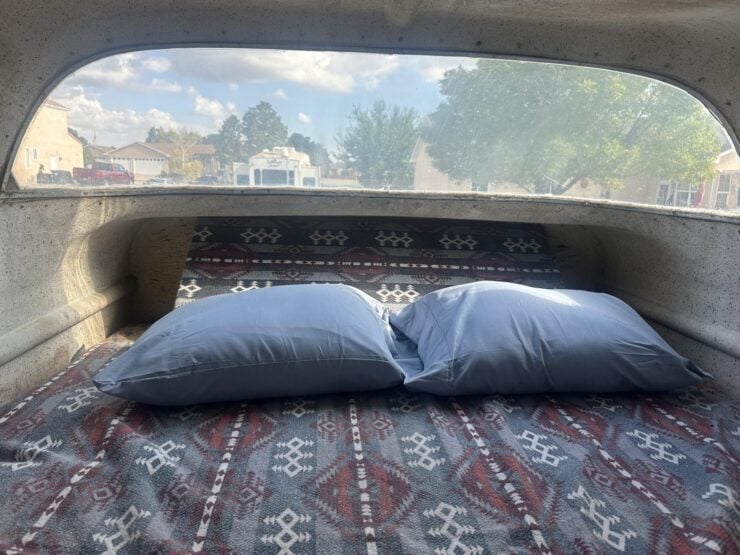

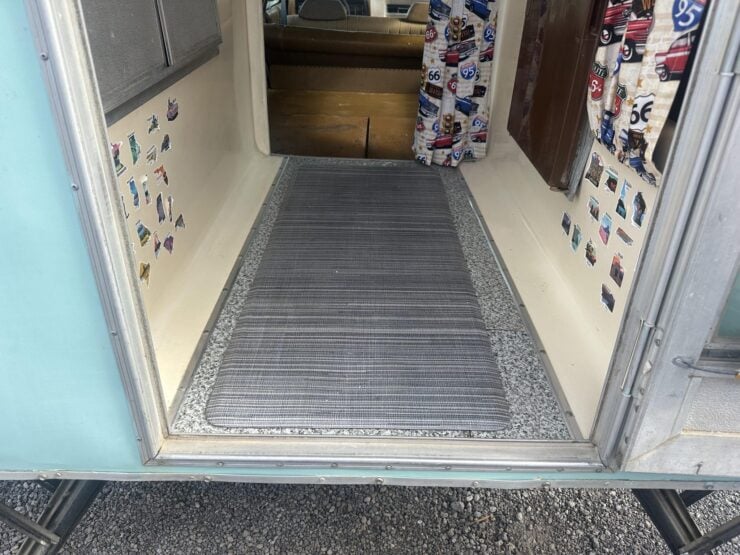
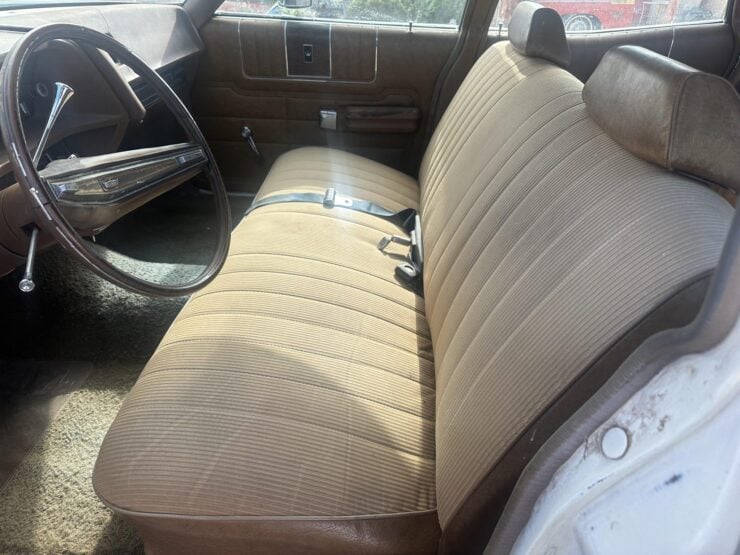
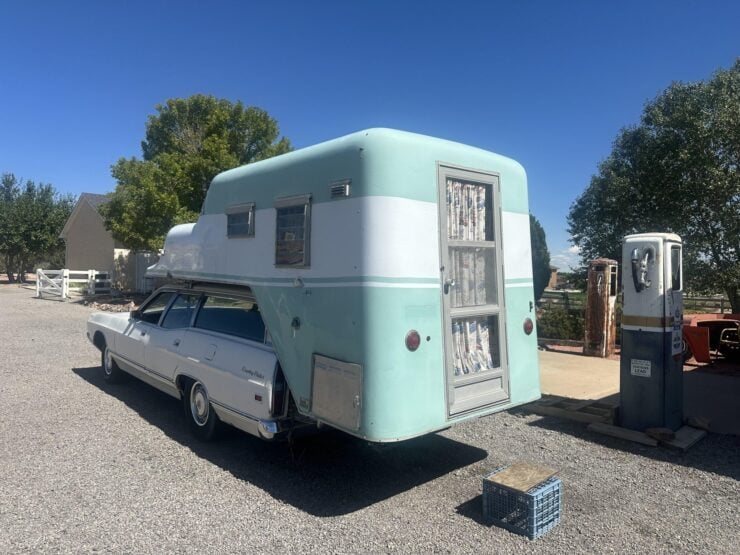
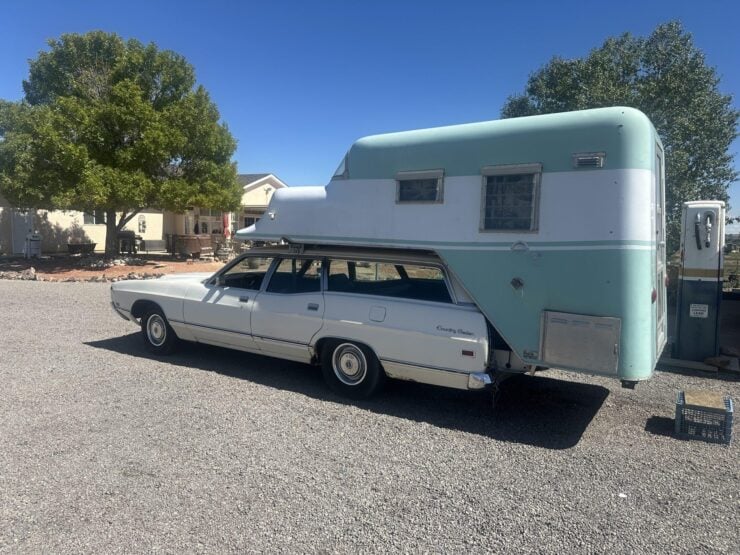
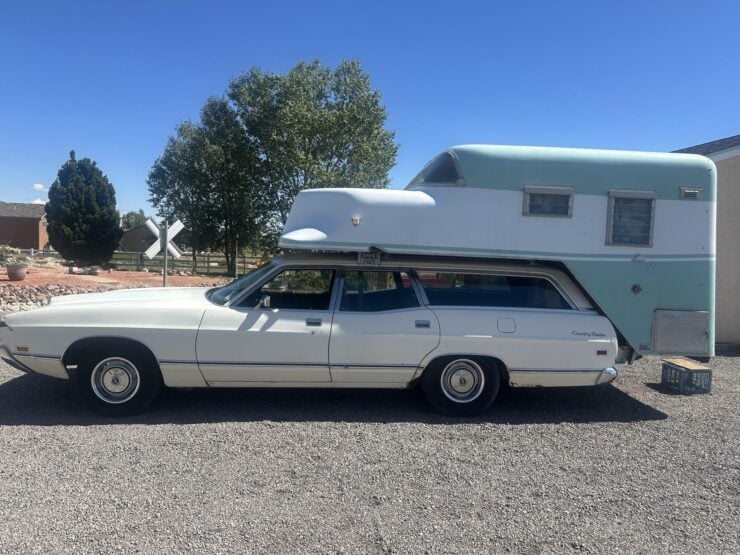
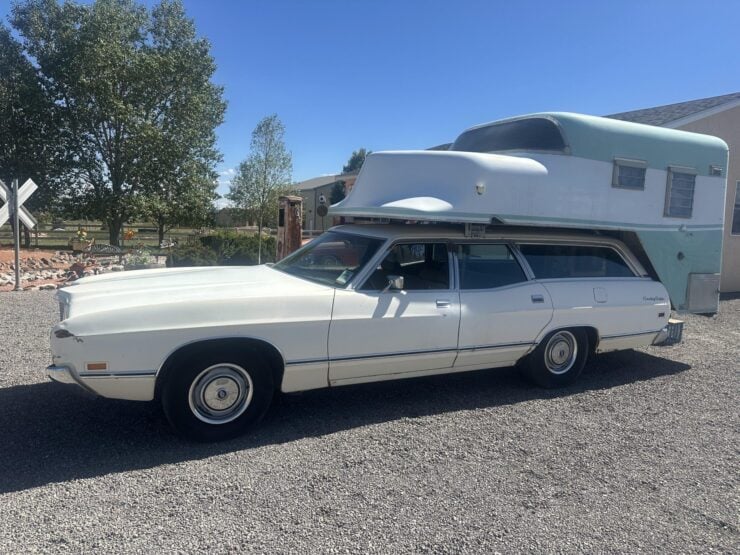
Images courtesy of Bring a Trailer

